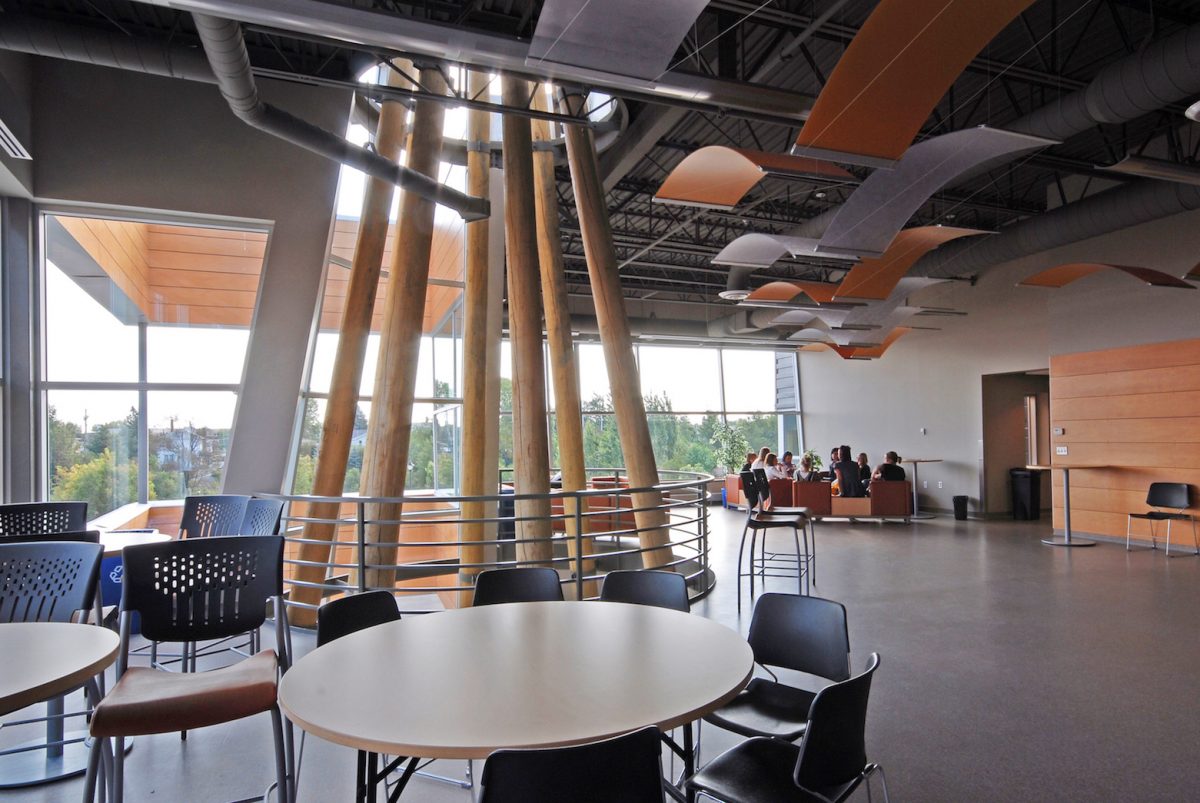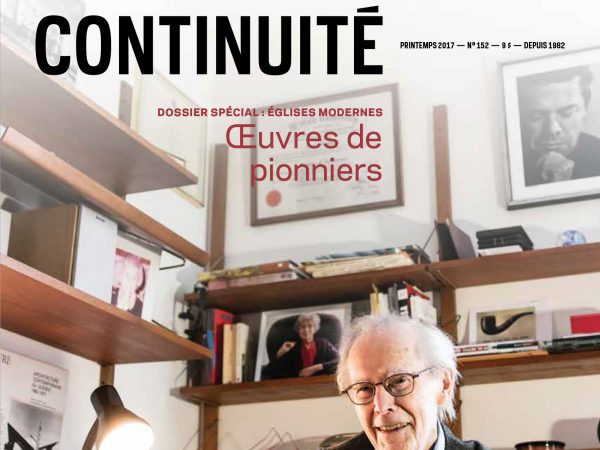A short time ago the city of Quebec celebrated its 400th anniversary. Today, Montreal is celebrating its 375th anniversary and the Canadian Confederation its 150 years of existence. These numbers bear witness to the embryonic state of our culture and heritage such as they have developed since the arrival of the first settlers in America. In contrast, France and older cultures such as Greece and the millennial civilizations of the East possess a cultural legacy, a history and a colossal, built heritage that attract thousands of visitors each year and do not require months of foundation festivities, festivals or other outsized events to do so. Not Canada.
Our material heritage—our built environment—is emergent and precarious.
Archaic and hybrid, our architecture was at first one of survival [1]1Continuité
La maison de colon: Pour répondre à l’urgence
2008, built according to techniques imported from Europe that had to be adapted to new climatic conditions and novel natural resources [2]2Continuité
Mon père a fait bâtir maison
1997. By itself, this simple observation raises a number of questions. What is the nature of the architecture that is to be preserved? Who are the actors when it comes to questions of the legacy of our built environment: citizens, historians, architects…? How can they work together? And let’s not forget the role played by the First Nations’ heritage [3]3Nouvelles pratiques sociales
Repenser le rapport à la ville : Pour une histoire autochtone de l’urbanité
2010.
I do not claim to be able to answer to these complex questions. Rather, I plan to lead readers to a point where they question themselves and are more critical with regards to the transformation of our cities and our architecture. To do so, I will briefly discuss two Quebec cases, being more familiar with this context, each of which illuminates these questions in their own way.
The First Peoples Pavilion at the UQAT
In 2009, the University of Quebec at Abitibi-Témiscamingue (UQAT) inaugurated its First Peoples Pavilion symbolizing the respectful coexistence between Aboriginal peoples and Quebecers. As pointed out by the University:
The constant concern of every individual involved in the project at any stage, giving the pavilion an Aboriginal character, has been expressed by references to culture such as a teepee, a Circle of Life, a characteristic work of art, and through the use of wood and materials that are identified with Aboriginal culture, among other things. Press-release issued on the occasion of the inauguration of the Pavilion, August 20, 2009
The UQAT also mentioned that:
After consulting Aboriginals and non-Aboriginals, the building designers integrated ornamental features to recreate the natural environment. […] A flock of geese heading north dresses up the ceiling, a fireplace stresses the importance of fire and tree crowns give natural character to the whole setting. All these elements of nature pay respect to Mother Earth. Website for the Val-d’Or campus
These extracts show that First Nations were consulted during the creation of this institutional architecture. But they primarily reveal a phase of conceptual development that lay entirely in the hands of the architects. It was only after the idea of the tipi and other references were established that those primarily concerned were interviewed. The consultation of Aboriginal respondents resulted in “decorative” additions to the architects’ concept.
Is this really an integrated collaborative process that adequately responds to the needs of those most directly concerned and users, in this case UQAT students and First Peoples, and that generates an architectural work symbolic of a heritage that we wish to maintain?
Undeniably, aboriginal culture has transformed itself since the arrival of the first settlers. Today, in the 21st century, what does the tipi symbolize for First Peoples? Does it have a meaning that refers to a place of learning and knowledge transmission such as a university? How does this type of architecture fit into our larger cultural heritage? Is this type of imitation, this gigantic object of wood and glass far from the rudimentary animal-skin shelter, something that we wish to bequeath to future generations that include Aboriginal peoples, Quebeckers and Canadians? Is this really the idea of the tipi that must persist over time?

I do not have the answers to these questions that we can summarize in a general way as: collectively, what material image do we wish not only to bequeath to future generations but also to present to other cultures. These questions which seem to me to be primordial have been systematically overlooked in all large (and small) projects.
These remarks are not meant to be negative—the stakeholders in the First Nations Pavilion project seem satisfied with the result—but interrogative. It is time that all of us—urban change-agents and culture-builders—begin to reflect on these issues; it is time to devise conceptual approaches that are more integrated and more easily accessible by the actors in the field of built culture.
The legacy of the 375th of Montreal
Let us continue with the example of the 375th anniversary of the founding of Montreal.
To build a sustainable architectural heritage that is adapted to the needs of the environment requires time, years or even decades. In the case of the 375th, in less than three years we will have chosen, conceptualized and built projects throughout the city—at least will we have tried to achieve this by 2017. Will this legacy, conceived in a hurry, age well and will it be representative of the image that we wish to convey of Montreal in the future? Are these projects internally consistent and consistent with the existing architectural environment? We are asking ourselves, as citizens, what symbols represent us and which ones we would like to see last into the future?

We should not overlook the children’s support and learning projects subsidized by these festivities. Or that as a result of a call for proposals, many citizens’ projects were selected for financial assistance. We see here as an attempt at a more integrated collaboration in order to improve life in the city.
I wonder, however, how these projects will survive after 2017 when they will be left to fend for themselves financially. What ultimately will remain of the 375th? The bitter memory of orange cones and a city under constant construction? This raises new issues, for example: How can we make our modes of funding sustainable? Is this question even taken into account in our consumer society? The 375th seems to me proof that it is not…
~~~
This brief text attempted to demonstrate the fragility * and the “in-process” status of both our intangible and built heritage, while demonstrating at the same time that large-scale projects must be set in motion so that we can undertake concerted thought. We need to establish, together, collective objectives that will lead to the construction of a sustainable heritage of which we can be proud.
* See Architecture et communication by Joseph Moukarzel (Paris: Presses des Mines, 2016) who decries the threat that globalization poses to built heritage through the world. Questions of identity are becoming increasingly primordial.[4]4Huffington Post Québec
L'architecture à l'ère où «espace virtuel» prime sur «espace physique»
Translation: Peter Keating

